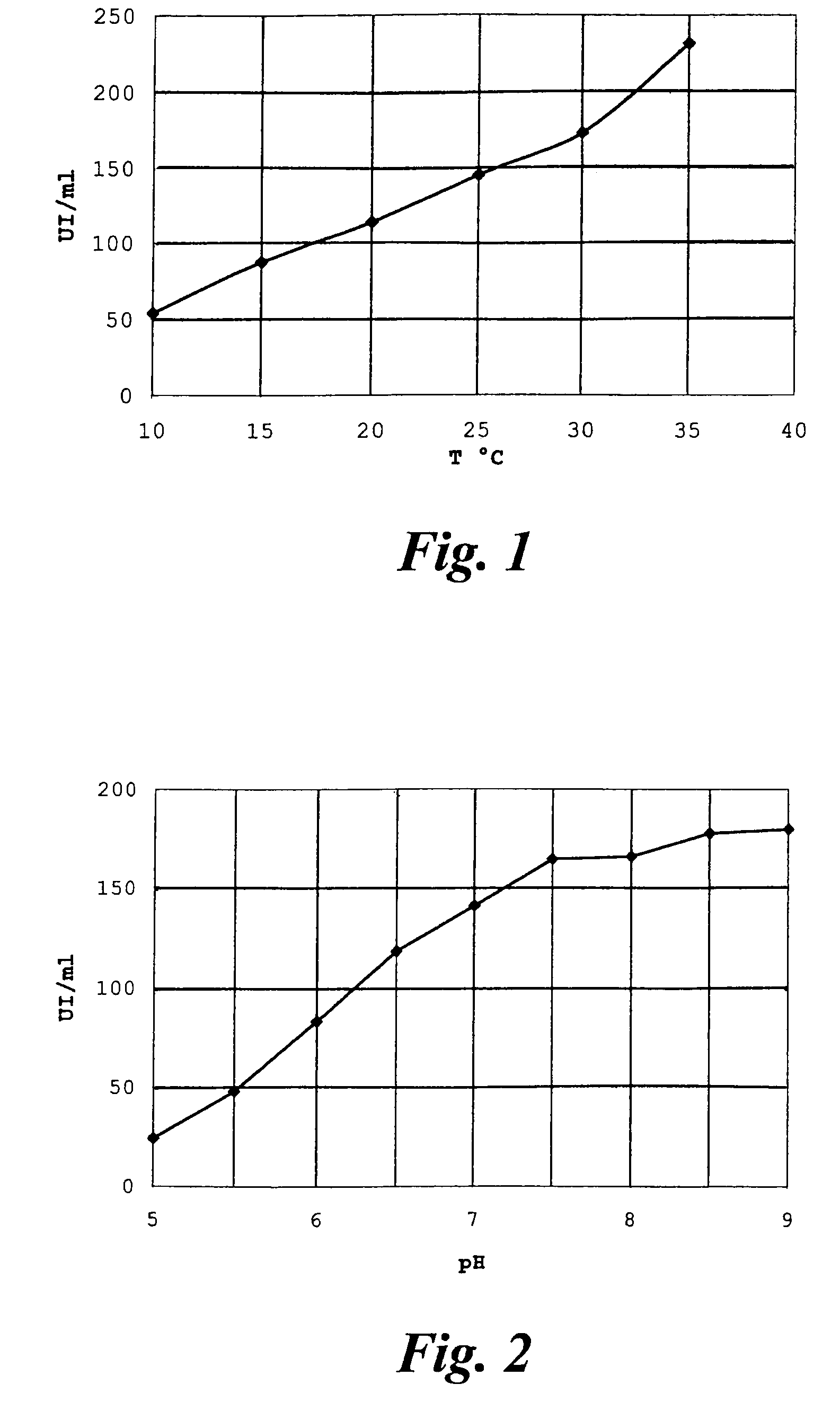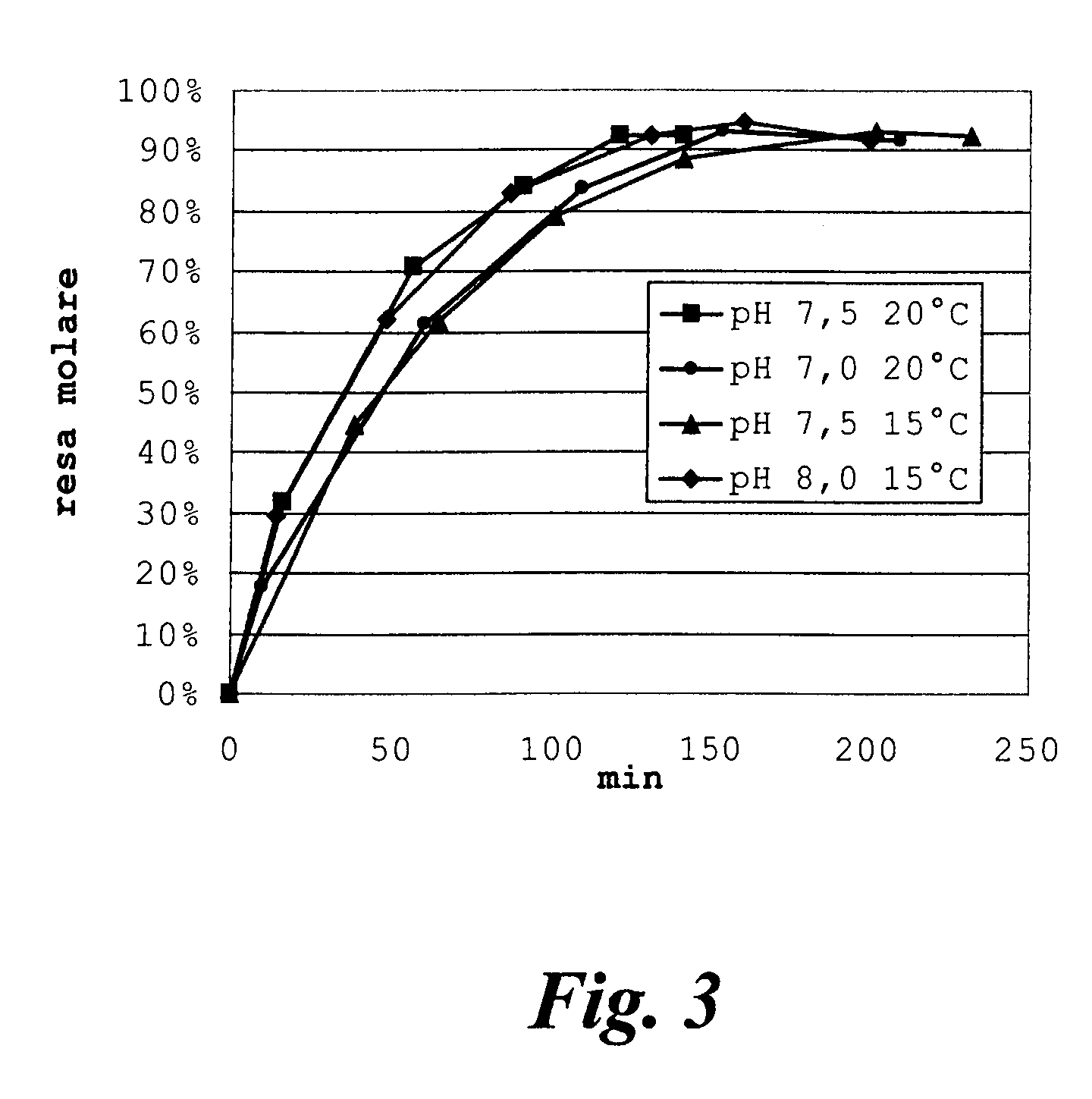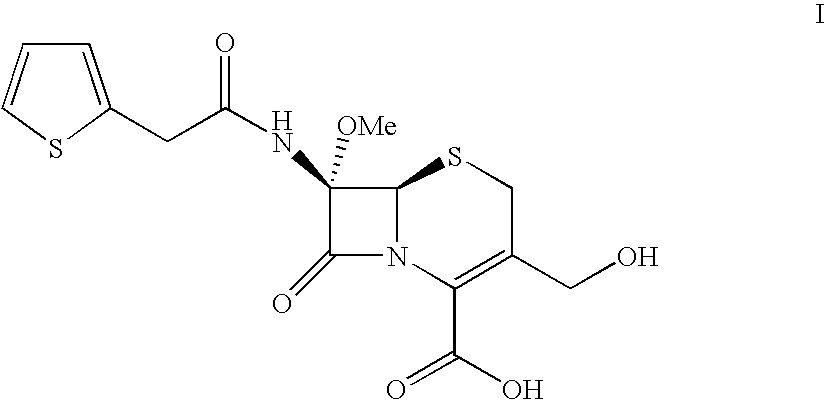Process for producing 7-methoxy-3-desacetylcefalotin
a technology of acetylcefalotin and methylmethoxy-3, which is applied in the field of production of 7-methoxy-3-desacetylcefalotin, can solve the problems of affecting the process efficiency of methanol, affecting the quality of methanol, and consuming a lot of energy, and achieves the effect of greater process productivity
- Summary
- Abstract
- Description
- Claims
- Application Information
AI Technical Summary
Benefits of technology
Problems solved by technology
Method used
Image
Examples
example 1
Chemical synthesis of 7-methoxy-3-desacetylcefalotin
[0046]300 g of 7-methoxy cefalotin in cyclohexylamine salt form (solution A), prepared by known procedures and having a titre of about 69% as acid, equal to about 500 mmoles, are added to a mixture of 1.0 liters of water and 1.15 liters of methanol. The mixture is cooled to −37° C.
[0047]Separately, a solution of 160 g of 30% sodium hydroxide in water in 300 ml of water is prepared and cooled to +5° C., them poured slowly into solution A, while maintaining the temperature between −45 / −35° C. for about one hour after finishing the addition. The reaction kinetics are monitored by HPLC analysis: when the residual 7-methoxy cefalotin is less than 0.7 g / l the reaction is interrupted by adding 90 g of 80% acetic acid while maintaining the temperature within −5° C. The pH, which must be neutral, is monitored, correcting to 6.8-7.0 if necessary. The mixture is distilled under vacuum by heating to +30 / +35° C., until a concentration of about ...
example 2
Enzymatic hydrolysis of 7-methoxy-3-desacetylcefalotin with Rhodosporidium toruloides biomass
[0049]Rhodosporidium toruloides ATCC 10657 is grown in a flask or fermenter for 72 hours from inoculation as described in the literature, withdrawing whole broth samples for monitoring the quantity of acetyl esterase produced. The enzymatic activity is expressed in international Units (IU), equal to the micromoles of substrate converted per minute, and is determined by hydrolysis of 7-ACA (20 g / l in water); the reaction is temperature controlled at +25° C. and pH-controlled at 6.5 by adding 0.1M NaOH by automatic titration (pH-stat, Crison Instruments SA, Barcelona, Spain). The growth broth is centrifuged at 10000 r.p.m. for 15 minutes, the pellet is resuspended in phosphate buffer and again centrifuged, to obtain a paste of wet cells with specific activity of about 6-10 IU per gram.
[0050]40.8 g of 7-methoxy cefalotin cyclohexylamine salt are dissolved in about 250 ml of water, correcting th...
example 3
Enzymatic hydrolysis of 7-methoxy-3-desacetylcefalotin with acetyl-esterase from Rhodosporidium toruloides
[0053]The Rhodosporidium toruloides biomass obtained as described in Example 1 is lysed by treatment with EDTA (ethylenediaminotetraacetic acid), to obtain an aqueous solution containing the acetyl esterase activity, which is purified by chromatography with carboxymethyl Sepharose, following the procedures known in the literature (Politino et al, Appl. Environ. Microbiol. 63, 12, pagg. 4807-11, 1997).
[0054]870 g of 7-methoxy-cefalotin benzathine salt prepared as in Example 1 are dissolved, the pH is corrected to 7.0 and the volume diluted to a total of 6000 ml, then 200 ml of a solution of acetyl esterase are added and the pH maintained at 7 by automatic titration with 3N ammonium hydroxide. On termination of the reaction the enzyme is separated from the product by ultrafiltration using the Millipore ProScale apparatus with Nanomax membrane and 10000 Da cut-off. From the permea...
PUM
| Property | Measurement | Unit |
|---|---|---|
| temperature | aaaaa | aaaaa |
| temperature | aaaaa | aaaaa |
| temperature | aaaaa | aaaaa |
Abstract
Description
Claims
Application Information
 Login to View More
Login to View More - R&D
- Intellectual Property
- Life Sciences
- Materials
- Tech Scout
- Unparalleled Data Quality
- Higher Quality Content
- 60% Fewer Hallucinations
Browse by: Latest US Patents, China's latest patents, Technical Efficacy Thesaurus, Application Domain, Technology Topic, Popular Technical Reports.
© 2025 PatSnap. All rights reserved.Legal|Privacy policy|Modern Slavery Act Transparency Statement|Sitemap|About US| Contact US: help@patsnap.com



